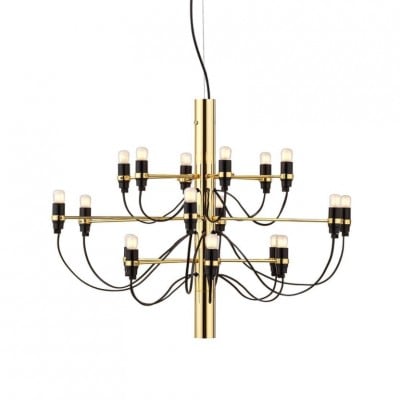2097 Lampadine
14.10.2021
1372
The 2097 lampadine is a type of lightbulb that is able to produce light up to 2097 lumens. It can also be plugged into any standard socket, making it the most energy efficient bulb in the world.
The 2097 lampadine is an example of how technology has advanced and how we are able to create more efficient designs. The lightbulb has a very long lifespan, and doesn’t need any replacement for over 50 years.
2097 lampadine is an example of how technology has advanced and how we are able to create more efficient designs. The lightbulb has a very long lifespan, and doesn’t need any replacement for over 50 years.
Share
Related posts
09
Srpen
2022
Don't miss the Vertigo pendant lamp replica at a good price!
The Vertigo pendant lamp replica is suitable for creating a visual center in these areas like...
01
Červen
2022
Want to buy an economical petite friture vertigo replica?
Want to buy an economical petite friture vertigo replica? The vertigo suspension lamp by...
01
Červen
2022
Render an art environment with Vertigo pendant light replica!
The Nordic Vertigo pendant light replica is made of fabric and polyurethane. The special material...
17
Říjen
2021
Flos 2097/18 Sarfatti
Artificial intelligence is the future of content generation and writing. AI writers are a step in...
17
Říjen
2021
Flos 2097/30 Messinki
Messinki is a Finnish word which means “messenger”. It's used to describe a person who delivers...
17
Říjen
2021
Flos 2097/30 Hinta
The flos 2097/30 hinta is a Finnish-language version of the floss, a Finnish word for thread. It...
17
Říjen
2021
Flos 2097 Lamp
The flos 2097 lamp is a product that is made of a glass bulb, a filament, and an LED. The glass...
17
Říjen
2021
Flos 2097 Prezzo
The flos 2097 prezzo is a new type of wine that has been created by the French winemakers.
17
Říjen
2021
Flos 2097/30 Gebraucht
The flos 2097/30 is a German-made, state of the art, automatic typewriter that was manufactured...
17
Říjen
2021
2097 Flos Ottone
The flos ottone is a type of star-shaped constellation. It was first described by the astronomer...







0 comment(s)